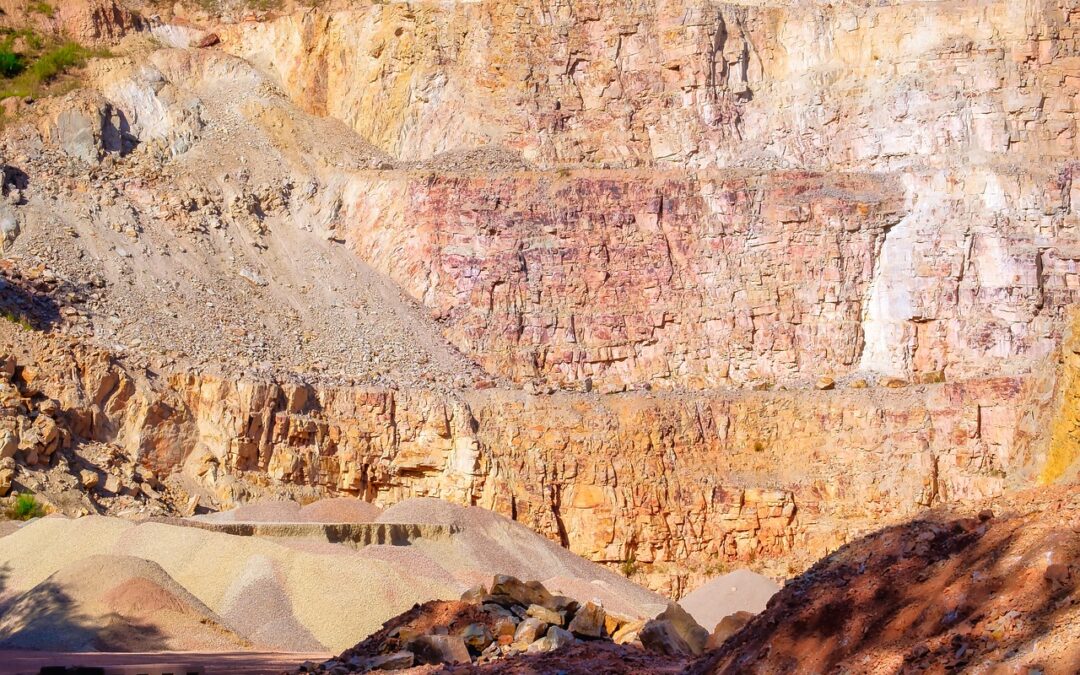Mining has long been an essential industry, fueling global economies and supporting countless livelihoods. However, it also comes with significant challenges, particularly in ensuring safety, minimizing environmental impact, and attracting a skilled, diverse workforce. Today, the mining sector is undergoing a transformation. Through innovation, policy changes, and community-focused strategies, companies are not only addressing traditional risks but also reshaping mining into a safer, more sustainable, and appealing industry.
In this blog, we explore how the industry is paving the way for a safer, more attractive mining industry by focusing on safety innovations, corporate accountability, environmental practices, and workforce development.
The Importance of Safety Innovations in Modern Mining
Safety is the backbone of mining operations, and innovations are vital in reducing risks. New technologies like advanced monitoring systems and real-time hazard detection tools ensure that potential dangers are identified and addressed swiftly.
- Real-time Monitoring Systems: These tools provide up-to-the-minute updates on conditions within mines, helping prevent accidents.
- Personal Protective Equipment (PPE) Enhancements: Innovations in PPE, such as lightweight helmets with integrated communication systems, improve safety and efficiency.
Such advancements are essential for paving the way for a safer, more attractive mining industry.
The Role of Policy and Regulation in Creating Safer Mines
Regulations play a critical role in ensuring safety standards are upheld. Governments and organizations enforce policies to reduce workplace hazards and improve worker protection.
- Occupational Safety Standards: Mandated training programs ensure that workers are aware of best practices.
- Inspections and Audits: Frequent evaluations help maintain compliance and foster accountability.
Collaboration between policymakers and industry leaders is crucial for creating a safer environment and strengthening trust.
How Technology is Enhancing Worker Protection
From wearables to drones, technology is transforming worker safety in mining. Key innovations include:
- Wearable Devices: Smart wearables monitor vital signs and alert workers to potential dangers.
- Drones: Used for inspections, drones access hazardous areas without putting workers at risk.
- Predictive Analytics: Data-driven insights forecast risks, allowing companies to prevent incidents proactively.
These advancements highlight how innovation contributes to paving the way for a safer, more attractive mining industry.
The Role of Automation in Reducing Hazards
Automation is reducing the need for human workers in high-risk environments. Autonomous vehicles, robotic drilling systems, and automated monitoring tools are becoming standard in modern mines.
- Automated Haul Trucks: These vehicles navigate mining sites without human drivers, minimizing exposure to dangerous conditions.
- Robotic Drilling: Robots perform precise drilling tasks, reducing accidents and improving efficiency.
By embracing automation, mining companies can protect workers while maintaining productivity.
Innovations in Mine Design for Improved Safety and Efficiency
Designing safer mines starts with thoughtful planning. Innovations in mine design are improving safety and operational efficiency:
- Ventilation Systems: Improved ventilation reduces exposure to harmful gases.
- Layout Optimization: Strategic design minimizes the risk of collapses and accidents.
These advancements not only protect workers but also increase the overall efficiency of operations.
Training and Education: Key Components of a Safer Workforce
Education is essential for creating a culture of safety. Comprehensive training programs ensure workers understand risks and know how to respond.
- Onboarding Programs: Teach new workers the basics of mine safety.
- Ongoing Education: Regular training sessions keep workers informed about new tools and regulations.
- Safety Drills: Simulated emergencies prepare workers for real-life scenarios.
By investing in education, companies are paving the way for a safer, more attractive mining industry. Companies like MSHA Safety Services make training and ongoing education easy.
MSHA Safety Services is dedicated to helping you navigate the various training options available, ensuring you receive the right instruction to meet both safety standards and regulatory compliance, while addressing the specific needs of your workplace.
Sustainable Practices Driving Industry Transformation
Sustainability is now a top priority for the mining sector. By adopting eco-friendly practices, companies can reduce their environmental footprint while maintaining profitability.
- Waste Reduction Initiatives: Recycling and reuse minimize waste production.
- Energy-Efficient Equipment: Lower emissions and reduce energy consumption.
These practices ensure that mining operations align with global sustainability goals.
Addressing Environmental Concerns in Mining Operations
Environmental concerns, such as habitat destruction and water contamination, have historically plagued mining operations. Today, companies are implementing solutions to mitigate these issues.
- Water Management Systems: Treat and reuse water to prevent contamination.
- Land Rehabilitation: Restore ecosystems after mining activities conclude.
By addressing environmental challenges, mining companies can build trust with communities and regulators.
Community Engagement: Building Trust and Ensuring Sustainability
Community engagement is vital for building trust and promoting sustainability. Successful strategies include:
- Community Advisory Boards: Allow local residents to voice concerns and provide input on projects.
- Investment in Local Infrastructure: Support schools, healthcare, and other community needs.
Strong community relationships are essential for the long-term success of mining operations.
Mining and Corporate Social Responsibility: A New Era of Accountability
Corporate Social Responsibility (CSR) initiatives demonstrate a company’s commitment to ethical practices. Examples include:
- Transparency Reports: Share information about environmental impact and safety performance.
- Charitable Initiatives: Invest in community development projects.
These efforts not only improve public perception but also align with industry-wide goals for sustainability.
Attracting Talent: Creating a More Inclusive and Appealing Mining Industry
To remain competitive, the mining sector must attract a diverse and skilled workforce. Strategies include:
- Flexible Work Policies: Support work-life balance and mental health.
- Diversity Initiatives: Promote inclusion and equality across all levels.
- Career Development Programs: Provide opportunities for advancement and skill-building.
By fostering an inclusive and appealing workplace, companies are securing the future of the industry.
Overcoming Challenges: The Road to a More Attractive Mining Sector
Challenges like public perception, safety concerns, and environmental impact can hinder the mining sector’s growth. Overcoming these challenges requires:
- Proactive Communication: Address public concerns transparently.
- Investment in R&D: Develop solutions for existing issues.
- Collaborative Efforts: Work with governments, communities, and NGOs to achieve shared goals.
These efforts ensure the sector remains viable and attractive for years to come.
The Economic and Social Benefits of a Safe Mining Industry
A safer mining industry benefits both workers and society. Key advantages include:
- Job Creation: Safe and sustainable practices support long-term employment.
- Economic Growth: Mining contributes to local and national economies.
- Social Stability: Improved safety reduces stress and fosters community trust.
By prioritizing safety, mining companies can enhance their economic and social impact.

Global Standards and Regulations Shaping the Future of Mining
Global standards, such as ISO certifications and UN sustainability goals, are driving positive change in the industry. These regulations ensure consistency and accountability across international operations.
- ISO 45001: Sets standards for occupational health and safety management.
- UN Sustainability Goals: Encourage responsible resource extraction and environmental stewardship.
Adherence to these standards highlights the industry’s commitment to safety and sustainability.
A New Era of Safety, Efficiency, and Environmental Responsibility
The mining industry is at a turning point. By prioritizing safety, embracing innovation, and fostering sustainability, companies are paving the way for a safer, more attractive mining industry. These efforts not only protect workers and the environment but also position the industry for long-term success.

